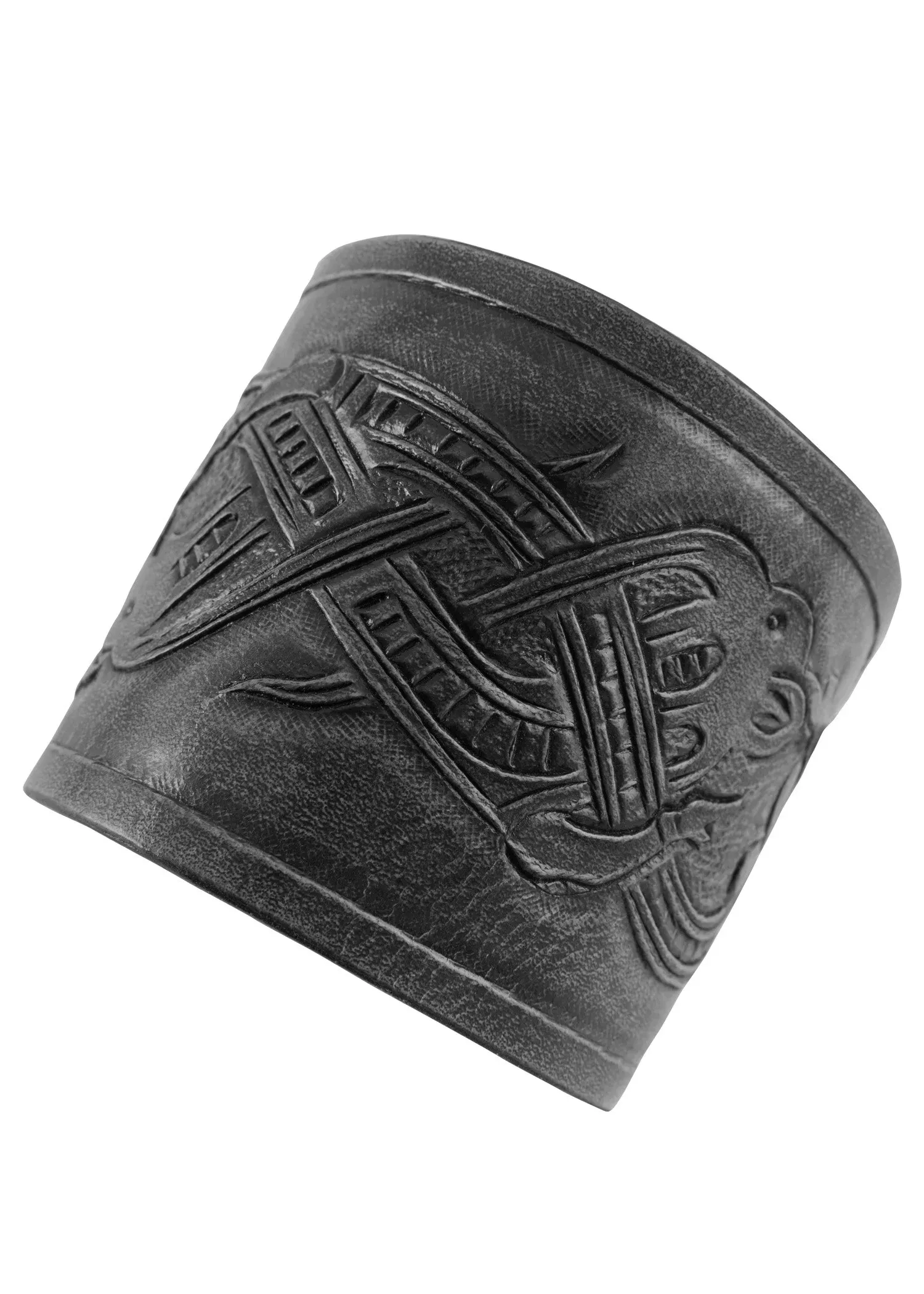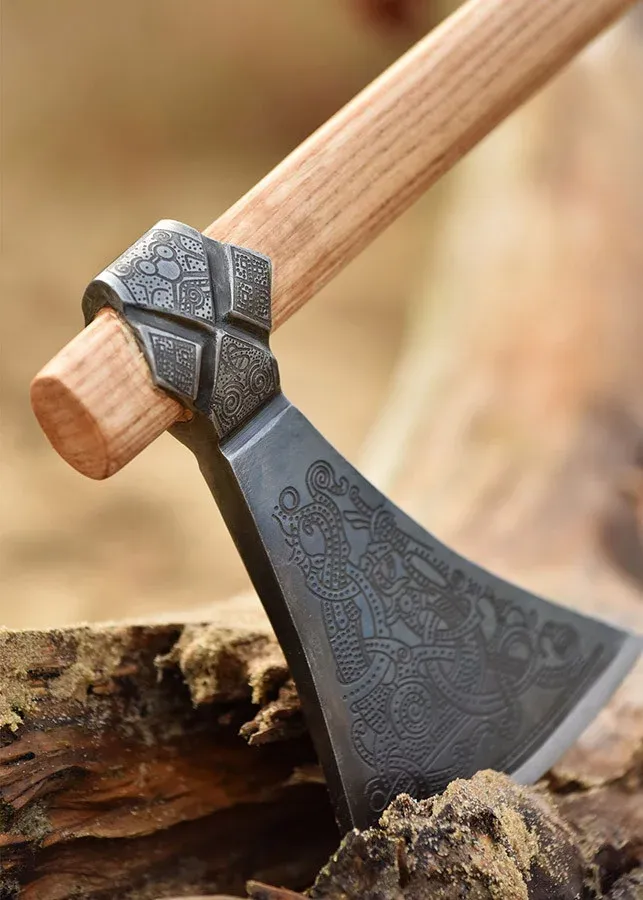What is the Jelling Viking Style?
The Jelling style is a crucial stage in Viking art that emerged during the 10th century, marking a significant advancement in the artistic expression of this Nordic culture. Its name comes from a silver chalice found in the royal burial mound of Jelling, Denmark. Initially, it was linked to the well-known runestones of Harald Bluetooth, although these were later assigned to the Mammen style. The Jelling style is characterized by its avant-garde, stylized, and geometric forms, reflecting a transition in the evolution of Viking art.
Characteristics of the Jelling Style
- Stylized S-shaped animals: The Jelling style is known for representing animals with elongated and curved bodies, always in profile. This elongated and sinuous design was also used to depict human figures.
- Vegetal motifs: The figures incorporated projections of vegetal shapes, such as tendrils and leaves, intertwined in complex decorations, creating a unique dynamism in the pieces.
- Geometric figures: The predominant use of circles, spirals, and triangles highlights the interest in geometric representation, demonstrating a sophistication in Viking art of the time.
Context and Evolution of the Jelling Style
The Jelling style emerged in the first half of the 10th century, coexisting with the Borre style. During this period, Viking art began to focus more on stone carving, reducing the use of wood and other traditional materials. Situated between the Borre style and the Mammen style, the Jelling style precedes and paves the way for future artistic evolutions. The pieces representing this style include various jewelry, horsebridles, and runestones found in Denmark, Sweden, Norway, England, the Isle of Man, and the Orkneys.

Influence and Legacy
The Jelling style is just one part of the rich Viking artistic tradition that developed over six successive styles: Broa-Oseberg, Borre, Jelling, Mammen, Ringerike, and Urnes. Each style reflects the diverse cultural and technical influences of its respective era. With its intricate ornamentation and stylized forms, the Jelling style left a lasting legacy in the development of Viking art, impacting medieval artistic production.
Today, the Jelling style continues to inspire artists and designers interested in reviving Viking traditions in contemporary creations, such as leather embossed bracelets and replicas of historical artifacts. This fusion of zoomorphic and geometric elements is a testament to the cultural and artistic splendor of the Viking age.





























